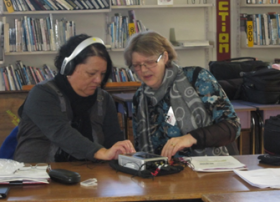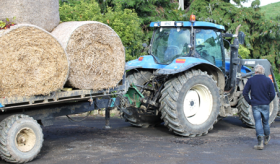Principal Investigator
Dr Ann Pomeroy (rural communities module)
Summary

The project explores the role of culture in building resilient communities. It also includes analysis of access to appropriate support and the roles of individuals, families, community organisations, central and local government agencies, and coordination across agencies in enabling community resilience.
Resilience is the ability to cope in an unexpected event (e.g., natural disaster or economic shock), recover and bounce back by adapting/changing and improving. This project investigates factors that build resilience in the face of unexpected events at an individual, household, community and institutional level.
Ann Pomeroy is looking at how rural communities, including the tangata whenua (Ngāti Manawa and Ngāti Whare) of the Murupara Community Board area (Eastern in the Bay of Plenty), and farm families in Waitomo (South Waikato) and Central Hawkes Bay, are adapting to economic change and other adverse events and shocks. The people of Murupara have survived many catastrophic disasters over the past 150 or more years (most notably the devastation brought by British colonisation). Work with this community shows how its cultural strengths have helped the two iwi to survive, cope, and rebuild.
In setting up the Murupara component of this project, Ann took advice from members of the community to identify an approach that would benefit local people. The plan was for members of the community to record oral histories of their Kuia, Koroua and other long-time residents of the area.
Ann also ran a school geography research competition with years 10 to 13 students (See Pomeroy and Holland 2016) to gain a perspective from young people on what they think resilience is and how resilient individuals, communities and institutions can be encouraged and supported.
While this part of the project built on international understanding of resilience, particularly Paton's eight domains of resilience, it extends this knowledge to show the importance of culture and leadership in enabling tangata whenua to be resilient.
Co-researcher Julie Warren explored post-earthquake responses/adaptations of people living in differently affected groups of streets, and streets with different social characteristics, in Christchurch city and the secondary urban area of Kaiapoi (Waimakariri district). This research included interviews with residents in a variety of situations (e.g., in red-zoned homes, in homes that require repairs, in streets where most or all residents have permanently or temporarily displaced, and with refugees and new settlers) to identify factors that help and hinder their coping with and adapting to their new circumstances. Interviews and dialogue with social service providers, CERA, and central and local government officials provided further insights.
Project Overview

The project was funded by the Ministry of Business, Innovation, and Employment, and was undertaken in conjunction with GNS Science. It consolidates current research findings about resilient communities in New Zealand. Stakeholder reference groups provide cultural advice and support for the research processes. The characteristics and attributes of resilient communities and what people can do and have done to build resilient communities were identified through combinations of hui, focus groups, interviews, oral histories and review of relevant reports, thesis work and statistical data.
In addition to the urban/rural module, a Maori research framework specific to Ngāi Tahu was developed. This documents Ngāi Tahu concepts of resilience and geo-physical hazards following the Canterbury Earthquakes, and the ways these are acted on by Ngāi Tahu community members and institutions.
Research updates
Three training sessions on carrying out oral histories were held in Murupara by Outreach Services, Alexander Turnbull Library (National Library) in 2013. Local participants are now trained in the key aspects of audio and video recording. To manage the work of undertaking and storing oral histories locally, local participants have established the Murupara Oral History Steering Group (Ngā Kaiwhakaruruhau o ngā taonga tuku iho) and this work is supported by Te Rūnanga o Ngāti Whare and Te Rūnanga o Ngāti Manawa. This group is recording the histories of local residents for the benefit of future generations. Some of the histories have provided contextual information about the resilience of Ngāti Manawa and Ngāti Whare for the main report. The Murupara report is currently with the community for review and we expect a copy to be made available via the Centre for Sustainability website by November 2016.
Greymouth High School scooped the top prizes for the Schools Geography Research Competition Understanding Factors that Build Resilience in 2013. A further round of this competition run in 2014 enabled an article to be published based on the resilience of Greymouth residents seen from the perspective of the school students (Pomeroy and Holland, 2016). Other student studies from the competition have provided a broad perspective including the impact of dairy factory closures on rural Taranaki, drought on farming districts, new migrant experiences in Auckland and coping with recession in both urban and rural areas.
Data analysis from field work undertaken with sub-groups including post-earthquake Christchurch and Waimakariri, fire service districts in rural Southland, and two North Island hill country districts (a longitudinal study of farm community resilience), is helping to identify drivers of individual, community and institutional resilience.
Data from field work undertaken with sub-groups including post-earthquake Christchurch and Waimakariri, fire service districts in rural Southland, and interviews thirty years apart of the owners of a 10% sample of sheep/beef farms in two North Island hill country districts are helping to identify drivers of individual, community and institutional resilience (see Pomeroy, 2015).
Recent Updates
The work on rural community resilience and climate change and the further work with on Murupara led to a re-examination of current information on the resilience and status of New Zealand's rural communities. Sponsored by the Bishops Action Foundation and funded by the Taranaki Community Trust, a socio-economic profile of rural and minor urban communities is now being compiled for Taranaki based on publicly available census data. In a second phase of this project rural Taranaki will be compared with similar rural communities. A forum to discuss findings is being planned for February 2017. A final phase of this project is a rapid appraisal of current social research on rural New Zealand.
Significant publications
Pomeroy A (2016) 'Resilient Communities Murupara' report
Pomeroy A and P Holland (2016) 'Secondary school student perspectives on community resilience in Grey District' New Zealand Geographer 72(1)57-68
Pomeroy A (2015) 'Resilience of family farming 1984–2014: Case studies from two sheep/beef hill country districts of New Zealand' New Zealand Geographer 71(3)146–158
Pomeroy, Ann (2011). Rural Community Resilience and Climate Change - Report to the Ministry of Agriculture and Forestry, New Zealand
Pomeroy, Ann (2011). Background papers to Rural Community Resilience and Climate Change - Report to the Ministry of Agriculture and Forestry, New Zealand
Primary Funder: GNS Science/ Massey University
Contract Value: $398.79
Term: 1/10/12 - 1/10/14
Centre for Sustainability researchers: Dr Ann Pomeroy
External Researchers: Julie Warren (Christchurch suburbs and Kaiapoi)